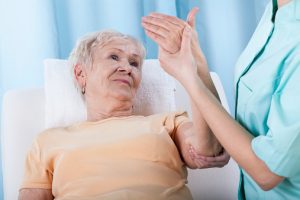
It’s great to be proactive. But just how we’d dismiss our health in our younger years because it didn’t bother us, we tend to now dismiss those silent threats that don’t come to the surface until it’s too late.
Case in point, aging bone health and the danger of osteoporosis. It’s true, nobody dies from bone loss, but the problems start when the bones break, which becomes much easier when they are weak and brittle as a result of osteoporosis.
Poor bone health in old age can be deadly
Again, fractures in old age are not the same as fractures in your prime years. The aftermath of a hip fracture can be so severe that the mortality rate following the event is as high as 50 percent.
It’s not the bone break itself that kills, but the ensuing complications. Some people lose most of their mobility and end up confined to bed. One of the risks the elderly face after a bone break is developing a life-threatening condition—deep vein thrombosis—in which blood clots can obstruct blood flow in the blood vessels serving the lungs. Another serious complication of being bed-ridden is social isolation, which is known to lead to many mental ailments and even physical illness too.
Women are usually more vulnerable to the effects of osteoporosis and are advised to start screening every two years after their 65th birthday. Because of the lesser risk, there are no clear-cut screening guidelines for men—however, those with substantial loss of height, suffering from low testosterone levels, or receiving hormone therapy should get into the habit of regular bone screening too.
Other risk factors that should prompt you to take care of your bone health include:
- Smoking
- Excessive alcohol consumption
- Family history of osteoporosis
- Family history of hip fractures in the old age
- Body mass index below 20
- Long-term use of steroids
- Chronic inflammatory conditions, such as rheumatoid arthritis and lupus.
Osteopenia is considered as the “pre-osteoporosis” stage. It means that there is a substantial bone loss, but it’s not severe enough for an osteoporosis diagnosis. It is a call to action to take extra steps to protect and strengthen your bones to avert further complications.
Along with adequate vitamin and mineral supplementation, you will be advised to get into the habit of doing weight-bearing exercises, such as bicep curls and squatting, in order to make your bones stronger. While you may already be taking steps to be more active, keep in mind that walking—an excellent physical activity in general—does not put enough stress on bones to effectively benefit your bone health.
Related: Effect of aging on bones and the foods to recover bone health